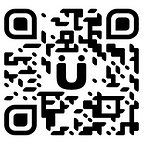Fourth wave blockchain startups promise to revolutionize the blockchain space by onboarding millions of users from traditional commerce streams.
The defining characteristic of fourth wave blockchain startups is that they apply the unique advantages of cryptographically secured ledgers to solve tangible, physical problems in the “real world”. These projects promise to onboard users by the container load, but we’ve all heard about “massive adoption” before — what is different now?
Typically, users on fourth-wave platforms may not (at first) know anything about cryptocurrency or blockchains — but because the business model transcends the blockchain space, the onramp is pushed right under the feet of new users, bringing them into the space without ever touching a cryptocurrency wallet:
Clifford Smyth, a dev and CEO at pruf.io, even goes so far as to claim that this is a “super power” of the team’s project in a recent public AMA session :
“Adoption is a huge issue for most projects in the cryptocurrency space. Most people know little or nothing about blockchain technology. Even fewer people actually hold or use crypto.
Working with manufacturers to prevent counterfeits, PRüF onboards users in bulk without them even knowing that they are using the blockchain.
When a major … manufacturer uses PRüF so that their customers know that they aren’t buying fakes, customers scan the tags in the store with their phones to verify their authenticity. All they know is whether a product is authentic or not — the blockchain operations are doing the work in the background.
After buying, (a customer) can register their purchase on the brand’s portal. Without ever touching a crypto wallet, they are now a PRüF user. The brand owner handles all of the blockchain interaction in their back-office infrastructure…
…Whether a user chooses to learn about the full functionality of their PRüF asset or not, millions of users will be onboarded every year by each major manufacturer using PRüF.”
While this obviously self-promoting statement may seem optimistic, the massive scale of daily commerce would bring revolutionary growth to blockchain platforms if someone can successfully port the blockchain funnel into everyday retail flows.
This would be different form the steady growth we have seen in the past, because outside of the cryptocurrency/Bitcoin space, blockchain projects tend to focus on blockchain-centric problems. While this is certainly useful and has done much to advance the state of the art and the utility of the ecosystem, it does little to bring in new users to the blockchain space.
Unlike many projects which bring financial products or services to underserved markets or to the crowded blockchain space itself, these new startups are leveraging blockchain technology where its strengths provide tangible benefits other than as financial instrument or trendy tagline.
Distributed ledgers are often a good fit when there exists an inherent misalignment of incentives. Math is an efficient and incorruptible arbiter of truth.
As an example of how retail-driven onboarding might work, lets consider the following scenario:
When a retailer is going to buy a container load of brand-name shoes, they want to receive the product that they are paying for. They want their customers to know that they are buying the genuine article.
On the other hand, the brand that the retailer is buying from wants to sell the products that they manufacture, and wants their customers to receive and appreciate the quality they are paying a premium price for.
Win/Win? Of course, it’s not that simple. The freight carrier may be able to make a lot of money by substituting lower-cost products for the ones they are commissioned to transport. An intermediary broker or reseller may be incentivized to buy fakes or stolen shipments and pass them off as legitimate. Even customs agents and dockworkers have potential perverse incentives that might damage the shipment’s integrity.
Although this situation is hypothetical, the problem is all too real — according to customs reports of seized merchandise, nearly 3 percent of all international trade is estimated to involve counterfeit or illicitly sourced goods.
When we look at the solution proposed by pruf.io, we start to see how a trend towards item tokenization might impact the greater blockchain space.
pruf.io proposes to attach a QR tag to each product (for our example, brand name shoes). This tag can be scanned by any smartphone camera — no app required — and will lead the customer or inspector to the brand’s portal where the tag will either show up as either valid or not.
Our hypothetical shoe buyer is now an accidental blockchain user. They may or may not go beyond scanning a code in the store before their purchase, but they own a blockchain-enabled item. This item has features that increase its value through the use of blockchain functionality.
If the user decides to, they can seamlessly put this tokenized asset into a wallet and utilize the additional features provided by the brand’s PRüF platform integration.
If we consider the number of shoes (and other items) sold every year by major brands, how many scans that means, and how many users that implies, we start to appreciate how fourth wave applications could be positioned to usher in a whole new phase of mass adoption.
